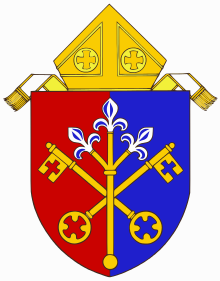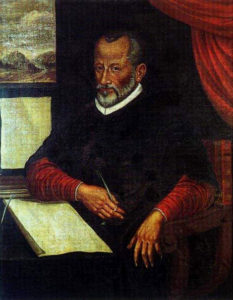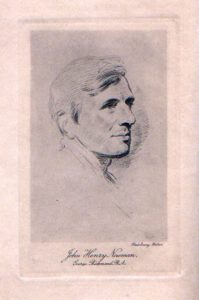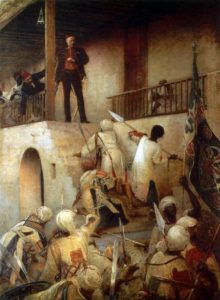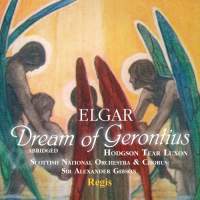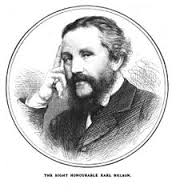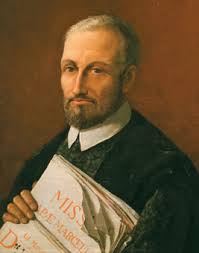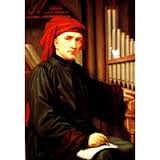Mount Calvary Church
Baltimore
Personal Ordinariate of the Chair of St. Peter
Patronal Feast of the Chair of St. Peter
February 19, 2017
__________
Missa aeterna Christi munera by Giovanni Pierluigi da Palestrina
__________
Hymns
Firmly I believe and truly
The eternal gifts of Christ the King
From all Thy saints in warfare
Anthems
Tu es Petrus, by Tomás Luis de Victoria
Ave verum corpus, by Josquin des Prés
_____________________________
Giovanni Pierluigi da Palestrina (1525-1594)
This late mass presents Palestrina at the height of his creative powers. Scored for four voices, with the usual addition of an extra voice (in this case a second tenor) for the final movement, this brief, concise mass is characterized throughout by the simplicity and clarity of the vocal writing, as well as the fluency and charm of its melodic lines. The purity, delicacy, and balance of the part-writing have been likened to that of a string quartet.
Aeterna Christi munera is of the “paraphrase” type, meaning that a short phrase of plainsong (such as a hymn or an antiphon from the Catholic liturgy) provides the melodic basis on which the work is constructed. Motifs) are extracted from this melody and used as points of imitation throughout the mass. Moreover, the structure of the hymn verse (ABCA) is reflected in the structure of individual mass movements as well.
The shorter movements (Kyrie, Sanctus, Benedictus, Agnus Dei) use imitation, where a melodic fragment is repeated by all the voices in succession, to develop the motifs borrowed from the paraphrased hymn-tune into a complex, florid counterpoint. A simpler homophonic texture prevails in the longer movements (Gloria, Credo), as was typical of Palestrina’s late works.
Palestrina also distances himself from his Franco-Flemish predecessors by his suave, flowing melodies, which contrast sharply with the more angular melodic contours favored by earlier composers. As well, the mass shows unending melodic inventiveness: themes are transformed and renewed from one movement to the next, providing the work with a sense of unity imbued with freshness. Palestrina makes good use of the sense of architectural balance acquired from the earlier composer Josquin, using repetition and reprise to structure the movements, for example, structuring the tripartite Kyrie with cadences in F, C, and F again.
The mass contains a few examples of the technique of word-painting. Particularly striking are his use of the low register to represent death at the words “Crucifixus” and “vivos et mortuos,” while a dance-like triple rhythm animates the “Et spiritum”; more subtly, Palestrina expands the second motif of the hymn-tune into a very expressive melody which recurs with every allusion to the Saviour. (Natalie Boisvert)
Here are the Kyrie and Gloria.
____________________
Opening Hymn
Firmly I believe and truly is adapted from John Henry Newman’s poem The Dream of Gerontius, a narrative poem written in 1865 about the progress of a soul from death to salvation.
As an Evangelical, Newman (1901-1890) rejected the doctrines of purgatory and the intercession of saints, but as part of his conversion (1845), he came to a realization, as he would call it, of the fullness of the communion of saints: those striving on earth, those being purified by the divine fire, and those in heaven moved by love to pray for those on earth and in purgatory. Gerontius (Greek Geron: old man), relates the journey of a pious man’s soul from his deathbed to his judgment before God and settling into Purgatory. As the priests and assistants pray the prayers for the dying Gerontius recites this creed and prays for mercy. “Sanctus Fortis, sanctus Deus” is from the Good Friday liturgy and is alluded to in the line “him the holy, him the strong.”
Firmly I believe and truly
God is Three and God is One;
and I next acknowledge duly
manhood taken by the Son.Refrain: Sanctus fortis, sanctus Deus, de profundis oro Te.
Miserere mei, judex meus, parce mihi, Domine.And I trust and hope most fully
in that manhood crucified;
and each thought and deed unruly
do to death, as he has died.Simply to his grace and wholly
light and life and strength belong,
and I love supremely, solely,
him the holy, him the strong.And I hold in veneration,
for the love of him alone,
Holy Church as his creation,
and her teachings as his own.Adoration ay be given,
with and through the angelic host,
to the God of earth and heaven,
Father, Son, and Holy Ghost.
Here is the hymn at Nashotah House.
General Gordon (1833-1885), troubled by fears of what happens after the end of life, had a copy of the poem sent to him in Egypt in 1884. He read it on his journey to his own death in Khartoum. This copy, with pencilled notes, was later given as a wedding present to Elgar. Elgar set it to music as an Oratorio, premiered in 1900. Its prominent Roman Catholic theology was objectionable to many Anglicans, and Elgar had to change the text to be have the oratorio performed in Church of England cathedrals.
Here is Peter Pears singing Firmly I believe and truly from Elgar’s The Dream of Gerontius.
_____________________
Offertory Hymn
The eternal gifts of Christ is an adaptation of a translation by John Mason Neale (1818-1866) of the Latin aeterna Christi munera by St. Ambrose (340-397).
The eternal gifts of Christ the King,
the apostles’ glory, let us sing,
and all, with hearts of gladness, raise
due hymns of thankful love and praise.For they the Church’s princes are,
triumphant leaders in the war,
in heavenly courts a warrior band,
true lights to lighten every land.Theirs is the steadfast faith of saints,
and hope that never yields nor faints;
and love of Christ in perfect glow
that lays the prince of this world low.In them the Father’s glory shone,
in them the will of God the Son,
in them exults the Holy Ghost,
through them rejoice the heavenly host.To thee, Redeemer, now we cry,
that thou wouldst join to them on high
thy servants, who this grace implore,
for ever and for evermore.
The plainchant melody is the melody upon which is based Palestrina’s Missa aeterna Christi munera, which is being sung today. Here is the Latin hymn which uses the melody.
___________________
Closing Hymn
From all Thy saints in warfare is by Horatio Nelson (1823—1913), nephew of Admiral Horatio Nelson. He became 3rd Earl Nelson in 1835. In 1857 he and John Keble, one of the leaders of the Oxford Movement, compiled the Sarum Hymnal. This hymn was published in 1864. It honors the saints while carefully avoiding mention of any intercessory role.
From all Thy saints in warfare, for all Thy saints at rest,
To Thee, O blessèd Jesus, all praises be addressed;
Thou, Lord, didst win the battle, that they might conquerors be;
Their crowns of living glory are lit with rays from Thee.Apostles, prophets, martyrs, and all the sacred throng,
Who wear the spotless raiment, who raise the ceaseless song,
For these, passed on before us, Savior, we Thee adore,
And, walking in their footsteps, would serve Thee more and more.Praise for thy great apostle, the eager and the bold;
Thrice falling, yet repentant, thrice charged to keep Thy fold.
Lord, make Thy pastors faithful to guard their flocks from ill,
And grant them dauntless courage, with humble, earnest will.Then praise we God the Father, and praise we God the Son,
And God the Holy Spirit, eternal Three in One;
Till all the ransomed number fall down before the throne,
And honor, power, and glory, ascribe to God alone.
Her is a modernized version, but a good arrangement. Here is another setting. And here is a fugue on Kings Lynn.
The pub where fisherman sang this melody for Ralph Vaughan Williams.
The tune is KINGS LYNN, by Ralph Vaughan Williams (1872—1958), an English composer of symphonies, chamber music, opera, choral music, and film scores. He was also a collector of English folk music and song: this activity both influenced his editorial approach to the English mnal, beginning in 1904, in which he included many folk song arrangements set as hymn tunes, and also influenced several of his own original composition. He collected m this melody, “Van Dieman’s Land,” at King’s Lynn, Norfolk, on 9 Jan. 1905. Vaughan Williams seems to have been an agnostic, but he was an Anglican agnostic.
_____________________________
Offertory Anthem
Tu es Petrus et super hanc petram aedificabo Ecclesiam meam, et portae inferi non praevalebunt adversus eam. Et tibi dabo claves regni caelorum.
You are Peter, And upon this Rock I will build My Church, and the gates of hell shall not overcome it. And I will give you the keys to the kingdom of heaven.
Here are The Cardinal’s Singers performing the 6 part motet.
Tomás Luis de Victoria (sometimes Italianised as da Vittoria; c. 1548 – 27 August 1611) was the most famous composer in 16th-century Spain, and was one of the most important composers of the Catholic Reformation, along with Palestrina and Orlando di Lasso,Victoria was not only a composer, but also an accomplished organist and singer as well as a priest. However, he preferred the life of a composer to that of a performer.
____________________
Communion Anthem
Ave verum corpus natum ex Maria virgine, vere passum immolatum in cruce pro homine, cuius latus perforatum unda fluxit sanguine, esto nobis praegustatum mortis in examine. O dulcis, o pie, o Jesu, fili Mariae, miserere mei.
Hail, true Body, born of the Virgin Mary, who having truly suffered, was sacrificed on the cross for mankind, whose pierced side flowed with water and blood: May it be for us a foretaste [of the Heavenly banquet] in the trial of death. O sweet, O gentle, O Jesu, son of Mary, have mercy on me.
Here is the piece performed by the Choralis Constantinus.
Josquin des Prés was the most famous European composer between Dufay and Palestrina, and is usually considered to be the central figure of the Franco-Flemish school. Josquin is widely considered by music scholars to be the first master of the Renaissance style of polyphony.
